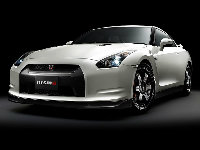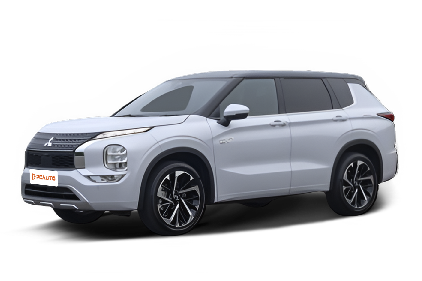Q
What is the fuel consumption of the 2018 Mitsubishi Outlander?
The fuel economy of the 2018 Mitsubishi Outlander varies by powertrain. The version with the 2.0L MIVEC four-cylinder gasoline engine delivers a combined fuel consumption of approximately 7.2 liters per 100 kilometers, while the 2.4L engine variant is slightly higher at around 7.6 liters per 100 kilometers. Actual fuel usage may be affected by driving habits, road conditions, and vehicle load. This SUV features Mitsubishi's exclusive ECO driving mode, which enhances fuel efficiency by adjusting throttle response and air conditioning output, making it suitable for balancing city commuting and long-distance driving needs. Notably, the Outlander stands out in its class with its S-AWC all-wheel drive system and optimized aerodynamic design, technologies that not only improve handling stability but also help reduce fuel consumption at highway speeds. To further optimize fuel economy, it's advisable to perform regular maintenance (such as replacing the air filter and using the recommended viscosity oil) and maintain proper tire pressure; these details help keep the vehicle operating at peak efficiency. For owners focused on fuel savings, the hybrid model is also worth considering, though it's important to note the differences in maintenance costs between various powertrain systems.
Special Disclaimer: This content is published by users and does not represent the views or position of PCauto.
Related Q&A
Q
Does the 2018 Mitsubishi Outlander have a timing belt or chain?
The 2018 Mitsubishi Outlander comes with a timing chain instead of a timing belt. This design offers advantages in durability and maintenance costs—unlike a timing belt, it generally doesn’t need regular replacement and theoretically lasts as long as the engine itself. However, it’s advisable to periodically check the condition of the chain tensioner and guides to ensure proper operation. Both the 2.0L and 2.4L MIVEC engines in this model use chain drive, a technology that reduces the risk of breakage and handles higher RPM conditions better. That said, the chain might produce slightly more operational noise than a belt. For owners, knowing the type of timing system is important: while chains have longer maintenance intervals, any unusual noises or skipped teeth still require professional inspection. Belts, on the other hand, need strict replacement every 60,000-100,000 kilometers or 5 years to prevent breakage and severe engine damage. During regular maintenance, keep an eye on the service manual’s recommendations for timing system checks. Using oil that meets specifications can also extend the chain system’s life. If you experience difficulty starting the engine or notice abnormal power delivery, promptly investigate potential timing issues.
Q
How long will a 2018 Outlander last?
The 2018 Outlander can typically hit 200,000 to 300,000 kilometers or more with regular maintenance and proper use. Its lifespan really depends on how well the owner takes care of it and the driving conditions. Under the hood, you've got the tried-and-true 2.0L or 2.4L naturally aspirated engines paired with a CVT transmission, making for a pretty reliable powertrain. Staying on top of key services like oil changes, transmission fluid swaps, and coolant replacements will definitely help it go the distance.
Body-wise, Mitsubishi went with a high-rigidity design, and the suspension is tuned more for comfort, which works well for local roads. But if you're regularly tackling rough terrain, it's smart to check the suspension and brake components more often. Inside, the materials are practical rather than fancy, but the interior and electronics don't throw a lot of tantrums. Keeping things clean and avoiding really damp spots should slow down aging.
If you're planning to keep it for the long haul, stick to the manufacturer's maintenance schedule and use reputable repair shops. Also, keep an eye on rubber parts and seals—they dry out over time, and replacing them before they fail can save you from bigger repair bills later. All in all, it's a solid, durable ride that fits the bill for folks who value practicality and fuel economy.
Q
Is there any recalls on a 2018 Mitsubishi Outlander?
Information on the recall of the 2018 Mitsubishi Outlander: this model was subject to global recall notices due to fuel pump failures and brake booster issues. Specifically, the fuel pump impeller could deform, leading to engine stalling, and insufficient sealing in the brake booster might affect braking performance. While recall batches may vary across markets, owners are advised to enter their Vehicle Identification Number (VIN) into the recall lookup tool on Mitsubishi's official website to check if their vehicle is affected, or contact an authorized service center directly for verification. Additionally, staying updated on recall information is crucial for vehicle safety, especially regarding potential hazards in electronic systems and critical components – for instance, some same-era models also had recalls related to airbag control modules or wiring harness connectors. If any abnormalities are noticed in the vehicle, such as difficulty starting or a hard brake pedal, prompt inspection at a service facility is recommended, and local dealers can provide free repair services. For used car buyers, checking the complete maintenance records and recall handling status is also an essential step to ensure the vehicle meets safety standards.
Q
Is a 2018 Mitsubishi Outlander all-wheel drive?
The 2018 Mitsubishi Outlander does come in an all-wheel drive version, which features Mitsubishi's S-AWC (Super All-Wheel Control) system. This system not only automatically distributes torque between the front and rear axles but also enhances cornering stability through features like Active Yaw Control, making it particularly well-suited for the local rainy and slippery road conditions. In addition to the AWD variant, the Outlander is also available with front-wheel drive, giving consumers a choice based on their needs. The AWD version is better suited for owners who frequently go on self-drive trips or have higher handling requirements.
Powering this vehicle is a 2.4-liter MIVEC naturally aspirated engine paired with a CVT transmission, delivering smooth power output and decent fuel efficiency. The interior space is generous, with a seven-seat layout that offers strong practicality. In terms of safety features, it comes standard with 7 airbags and an active stability control system. Overall, it still offers competitive value for money in the used car market.
It's important to note that when buying a used AWD vehicle, it's advisable to check the maintenance records of the drivetrain and ensure that the transfer case and differential fluids have been replaced on schedule to keep the AWD system in optimal condition.
Q
What is the maintenance schedule for 2018 Outlander?
For the 2018 Outlander, it's recommended to get regular maintenance every 10,000 kilometers or 6 months, whichever comes first. Basic maintenance includes an oil and oil filter change, along with checks on tires, brake system, lights, and chassis condition. The air filter should be replaced every 20,000 kilometers, and the cabin air filter is best cleaned or replaced every 15,000 kilometers to keep the interior air fresh. Spark plugs need changing at 60,000 kilometers, while transmission fluid and brake fluid should be inspected or replaced around 40,000 kilometers. Always refer to the owner's manual and adjust based on your actual driving conditions. It's worth noting that regular servicing not only extends your vehicle's lifespan but also maintains fuel efficiency and driving safety – especially in tropical climates, where checking the AC system and coolant becomes even more crucial. If you frequently drive on dusty roads or in heavy traffic, consider shortening the replacement intervals for the air filter and engine oil. Additionally, opt for original equipment or certified parts to ensure compatibility, and keeping complete maintenance records will help with vehicle valuation when it comes time to sell as a used car.
Q
What is the engine capacity of the 2018 Outlander?
The 2018 Outlander comes with two engine options: 2.0-liter and 2.4-liter. The 2.0L MIVEC four-cylinder gasoline engine puts out around 145 horsepower, while the 2.4L MIVEC four-cylinder gasoline engine delivers approximately 167 horsepower. Both engines are paired with a CVT transmission, balancing smooth daily driving and fuel efficiency. Under the hood, this SUV uses Mitsubishi's classic MIVEC variable valve timing system, which optimizes intake efficiency based on driving conditions to boost power response and cut fuel consumption. For practical-minded family buyers, the 2.0L version is more than enough for city commuting. If you frequently hit the highway or need stronger performance, the 2.4L variant is the better pick. It's worth noting that these naturally aspirated engines have a relatively simple structure, lower maintenance costs, and good adaptability to local fuel quality—perfect for our driving environment. Plus, Mitsubishi's reputation for reliability gives peace of mind for long-term ownership.
Q
How many recalls are there for 2018 Outlander?
According to official records, the 2018 Outlander had a total of 5 recalls worldwide, mainly involving potential issues with the fuel pump relay, seatbelt pretensioners, and driveline software. Owners can get free inspections and repairs at authorized service centers. While recalls might be worrying, they actually show the manufacturer's commitment to quality. Checking recall information regularly and addressing it promptly helps keep your ride safe. I recommend owners use their VIN to check the specific recall status on the brand's official website. Also, make it a habit to do regular maintenance—like checking the electrical system and chassis components every 6 months. That way, you can catch potential problems early. If you notice any weird noises or warning lights, hit up a pro technician ASAP for a diagnosis. Trust me, proactive maintenance is way less of a hassle than dealing with breakdowns later. For used car buyers, verifying recall repair records is a key part of inspecting the vehicle. It’ll save you from future headaches down the road.
Q
What is the range of the 2018 Mitsubishi Outlander?
The range of the 2018 Mitsubishi Outlander depends on its specific powertrain. The version with the 2.0-liter MIVEC gasoline engine has a 63-liter fuel tank, delivering a combined driving range of approximately 600 to 650 kilometers on a full tank. The 2.4-liter variant, with its slightly larger displacement, sees a minor reduction in range, coming in at 550 to 600 kilometers. Actual mileage will vary based on driving habits and road conditions. When this SUV is equipped with the S-AWC all-wheel-drive system, fuel consumption increases slightly, but it enhances stability on complex road surfaces, making it suitable for long journeys. If you opt for the plug-in hybrid version (PHEV), it can travel around 50 kilometers in pure electric mode, and with the combustion engine, the total range exceeds 800 kilometers, ideal for short commutes and energy-saving needs. The Outlander's fuel tank capacity is similar to that of same level Japanese system SUV, but it's advisable to regularly maintain the engine and tire pressure to optimize fuel efficiency. Additionally, its ECO driving mode can further extend the range. It's important to note that the range of used vehicles may vary depending on the condition of the battery or engine; you can request to inspect the fuel efficiency data before purchasing.
Q
What is the fuel consumption of the 2018 Outlander?
The fuel economy of the 2018 Outlander varies depending on the powertrain and driving conditions. Models equipped with the 2.0L naturally aspirated engine have a combined fuel consumption of approximately 7.6L/100km, while the 2.4L version is slightly higher at around 8.1L/100km. Actual fuel usage may fluctuate based on factors like road conditions, driving habits, or vehicle load. This SUV features Mitsubishi's MIVEC technology to optimize combustion efficiency, paired with a CVT transmission to enhance fuel economy, making it well-suited for balancing city commuting and long-distance driving. To further reduce fuel consumption, it's advisable to regularly maintain proper tire pressure, avoid sudden acceleration, and use the ECO driving mode appropriately. Among SUVs in its class, its fuel economy is on par with competitors, but the Outlander stands out with its higher ground clearance and practical space layout, ideal for family users. It's worth noting that the hybrid Outlander PHEV is also available in the local market, offering an all-electric range of about 50 kilometers, making it more suitable for short commutes and significantly reducing fuel expenses.
Q
Is the 2018 Mitsubishi Outlander good or bad?
The 2018 Mitsubishi Outlander is a family-friendly SUV that shines with its spacious seven-seat layout and solid practicality, making it a solid pick for group outings. Under the hood, the 2.4L MIVEC engine delivers smooth power, and fuel economy sits right in the middle of its class. On the safety front, standard active features like the FCM Forward Collision Mitigation system add peace of mind on the road. That said, the interior leans heavily on hard plastics, feeling a bit plain compared to some rivals, and the third row is tight for adults—better suited for kids or short trips. The all-wheel-drive version handles light off-roading steadily, but it’s no hardcore trail rig; it’s more at home in the city with the occasional outdoor adventure. If you prioritize utility and value over a plush interior, the 2018 Outlander is worth a look. Still, I’d recommend test-driving it alongside the 2018 Honda CR-V or Toyota RAV4 to make sure it lines up with your driving style and needs.
Latest Q&A
Q
How much is insurance for a BMW M5 2025?
The insurance cost for the 2025 BMW M5 varies depending on individual circumstances and insurance company policies, typically ranging from RM15,000 to RM30,000 per year. The specific amount depends on factors such as the vehicle's purchase price, engine displacement, the owner's age, driving record, and the type of insurance selected. High-performance cars like the M5 have higher insurance premiums mainly because their repair costs are expensive and they have powerful engines, leading insurance companies to assess higher risks. Comprehensive Insurance is the most common choice, covering theft, accidents, and third-party liability, while Third-Party Insurance is cheaper but has limited coverage. It is advisable for car owners to compare quotes from several companies before purchasing insurance and consider increasing the No-Claims Discount (NCD) to reduce premiums. Additionally, installing tracking devices or taking defensive driving courses may also help lower insurance costs. Insurance costs for high-performance cars are generally high, so budget planning should be done before buying the car to ensure long-term vehicle maintenance costs are affordable.
Q
How fast is the M5 2025?
The 2025 BMW M5 is a high-performance sedan that really delivers on power. It's packing a plug-in hybrid setup with a 4.4-liter V8 twin-turbo engine and an electric motor, churning out a combined output of over 718 horsepower. It'll hit 0-100 km/h in around 3.3 seconds, and while the top speed is electronically limited to 250 km/h,ticking the M Driver's Package bumps that up to 305 km/h. But it's not just about straight-line speed—this thing handles like a dream too. With the M xDrive all-wheel-drive system, active differential, and adaptive suspension, it stays rock-solid even when you're pushing it hard. For folks who love high-performance cars, the M5's hybrid system is a win-win: it boosts power while also offering some fuel efficiency, especially in the city where electric-only mode cuts down on emissions. Inside, it's loaded with tech, featuring the latest iDrive system and advanced driver assistance features, perfect for owners who want a mix of speed and cutting-edge tech. And if you're craving even more extreme performance, keep an eye out for the upcoming M5 CS version, which is expected to get lighter and even more powerful.
Q
Is the 2025 M5 electric or gas?
The 2025 BMW M5 will feature a plug-in hybrid system, combining a 4.4-liter V8 twin-turbo engine with an electric motor, delivering a combined output expected to exceed 700 horsepower. It retains the driving excitement of traditional high-performance gasoline cars while incorporating the environmental benefits of new energy technology. This powertrain configuration is becoming an increasing trend in the high-performance car segment, with models like the Porsche Panamera Turbo S E-Hybrid also adopting hybrid setups. For car owners who value performance but also want to try new energy, it's a solid choice. Currently, many brands are applying hybrid technology to their high-performance models, which not only boosts power performance but also reduces emissions. These models typically support short-distance all-electric commuting, making daily use more economical, while retaining the convenience of gasoline-powered long-distance driving. The future high-performance car market will likely see more innovations in similar powertrains.
Q
What size engine is in the 2025 M5?
The 2025 BMW M5 is expected to feature a plug-in hybrid system combining a 4.4-liter V8 twin-turbo engine with an electric motor, boasting a combined output likely exceeding 700 horsepower and torque potentially breaking 800 Nm. This powertrain not only carries forward the M5's legacy of high performance but also improves fuel efficiency through electrification. Notably, this marks the first time the M5 has adopted a hybrid system, signaling the shift toward new energy in high-performance sedans—a trend mirrored in competitors like the Mercedes-AMG E63. For drivers who love behind-the-wheel thrills, the hybrid setup delivers more immediate torque response, while the electric motor should make low-speed acceleration feel sharper. These high-performance hybrid systems typically come with sophisticated all-wheel drive and adjustable suspension, ready to tackle everything from daily commutes to track days. If you're eyeing this class of performance cars, it's worth test-driving to feel the difference between hybrid and traditional gas-powered models—after all, the power delivery smoothness and exhaust note character will vary.
Q
How is the 2025 M5 different from the last M5?
The 2025 M5 gets some serious upgrades over the previous generation, especially in the powertrain and electrification departments. The biggest change? It's the first time we're seeing a plug-in hybrid setup under the hood. Pairing that 4.4-liter twin-turbo V8 with an electric motor, the total output is expected to hit 718 horsepower – that's around 100 horses more than the old gas-only model. And with an electric-only range of 60-80 kilometers, it's actually pretty practical for daily short commutes now.
On the chassis front, adaptive suspension and four-wheel steering come standard, making it even more nimble. Yeah, the battery pack adds about 200 kilos to the curb weight, but they've tried to offset that with lightweight bits like the carbon fiber roof. Inside, there's a new curved dual-screen setup and iDrive 8.5, plus a dedicated interface for the hybrid modes.
Outside, the bigger kidney grille and sharper laser headlights are dead giveaways, and the rear diffuser's been redesigned to smooth out the aerodynamics. What really matters here is that this marks the M5's first step into electrification in its 37-year history. Sure, it's heavier, but the torque vectoring and smarter all-wheel-drive system actually make it better on the track. Balancing performance with eco-friendliness like this feels like the way forward for high-performance cars, and we're already seeing similar tech pop up in new models from some competitors.
View MoreRelated News

Mitsubishi Lancer Evolution might be resurrected, so what will the new Evo look like?
WilliamNov 14, 2025

Choose Honda HR-V or Mitsubishi XPANDER for a family car?
WilliamNov 12, 2025

Toyota HiAce and Mitsubishi Outlander upgraded to receive five-star safety rating
WilliamSep 24, 2025

Mitsubishi Cuts Full-Year Profit Forecast by 30%, Challenged by US Tariffs and Intensified Global Competition
Kevin WongAug 28, 2025

Mitsubishi to Launch Electric Vehicle Based on Nissan Leaf in Second Half of 2026
LienMay 8, 2025
View More

















Pros
Cons